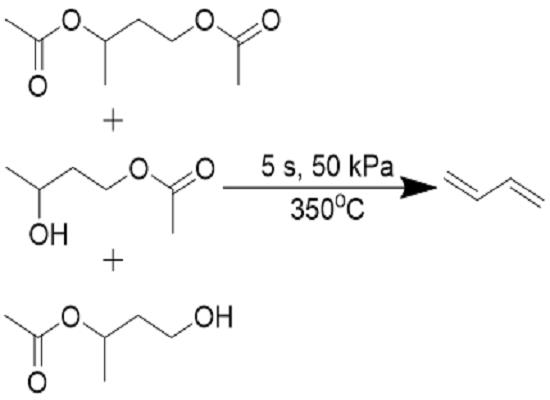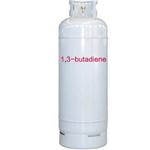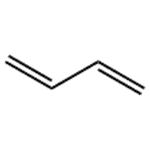1,3-Butadiene: pathogenicity and synthesis
General Description
1,3-Butadiene is a carcinogen with occupational exposure risks, metabolizing into genotoxic compounds that form DNA adducts, with no clear no-effect threshold. Exposure can reach 500–1000 ppm in workplaces, yet the impact of such high levels remains unclear. Studies show increased leukemia and non-Hodgkin lymphoma rates in synthetic rubber workers, with rodent models confirming 1,3-Butadiene's carcinogenicity at varying concentrations. Additionally, 1,3-Butadiene has been linked to an elevated risk of cardiovascular diseases, especially arteriosclerotic heart disease in non-white male workers, as evidenced by two large epidemiological studies. Synthetically, 1,3-Butadiene is produced from hydrocarbons through high-temperature elimination reactions, using specific catalysts to optimize yield and purity.
Pathogenicity
Cancer
1,3-Butadiene is a carcinogenic chemical associated with occupational exposure risks. Its carcinogenicity is believed to stem from its metabolism into genotoxic, electrophilic compounds that can alkylate DNA, forming DNA adducts. Concerns have been raised about the absence of a no-effect threshold for 1,3-Butadiene-induced cancer, as even low occupational exposures result in detectable 1,3-Butadiene-DNA and hemoglobin adducts. Workplace concentrations of 1,3-Butadiene can be high, sometimes reaching or exceeding 500–1000 ppm, but the effects of these intense but brief exposures are not fully understood. Genotoxic endpoints like hprt mutant frequencies, chromosomal aberrations, and sister chromatid exchanges have been investigated in exposed workers, often showing negative results, which align with broader cancer epidemiology findings. However, exceptions include increased leukemia and non-Hodgkin lymphoma rates among synthetic rubber industry workers, suggesting occupational exposure to 1,3-Butadiene may elevate certain cancer risks. Rodent studies provide strong support for 1,3-Butadiene's carcinogenic potential, with mice showing significant tumor increases at 62.5 ppm exposure, whereas rats only showed effects at much higher levels (8000 ppm). These species-specific responses are linked to differences in 1,3-Butadiene metabolism, particularly the efficiency of metabolic activation to monoepoxide (BME) and subsequent detoxification, as well as the potency of the diepoxide (1,3-ButadieneE) metabolite as a carcinogen. Mice metabolize 1,3-Butadiene to BME more readily and detoxify it less efficiently than rats, leading to higher genotoxic damage from the more potent 1,3-ButadieneE in mice. 1
Cardiovascular disease
Occupational exposure to 1,3-Butadiene has been linked to an increased risk of cardiovascular disease, particularly arteriosclerotic heart disease, in non-white male workers. This association emerged from two large, independent longitudinal epidemiological studies that examined thousands of workers at 1,3-Butadiene production facilities. Notably, the standardized mortality ratio (SMR) for arteriosclerotic heart disease rose significantly, by nearly 50%, among black maintenance workers in one study. This spike in SMR was observed when comparing mortality data from over 12,000 male employees in the U.S. and Canada against expected levels from the general population. A separate study corroborated these findings, revealing elevated SMR for all causes of death, including arteriosclerotic heart disease, but again only among non-white males. These retrospective studies primarily involved workers exposed to 1,3-Butadiene before the implementation of stringent occupational exposure limits. Even as late as 1994, the threshold limit value (TLV) for 1,3-Butadiene was 20 parts per million (ppm), substantially higher than today's TLV of 1 ppm, indicating historical exposure levels were considerably greater. 2
Synthesis
1,3-Butadiene is a critical industrial chemical primarily used as a monomer in the production of synthetic rubber and various polymers. Its synthesis can be achieved through an elimination reaction of carboxylic acid groups from hydrocarbon-containing raw materials that have multiple carboxylate groups. An example of such a process involves the use of 1,3-diacetoxybutane, which contains the requisite carboxylate groups needed for the elimination reaction. In the synthesis process, the concentration of the hydrocarbon in the raw materials is maintained between 0.1 to 95 mol%. The reaction is carried out at elevated temperatures ranging from 250 to 800 degrees Celsius to facilitate the elimination of the carboxylic acid groups. Catalysts such as mullite balls (FFB-A 601) and silica alumina (N 632L) are employed to enhance the reaction efficiency and selectivity towards the formation of 1,3-butadiene. During the reaction, the acetoxy groups in 1,3-diacetoxybutane are removed through a high-temperature process, resulting in the formation of 1,3-butadiene along with the by-products, which are typically carbon dioxide and water from the carboxylic groups. The use of specific catalysts ensures that the reaction pathway is directed toward the production of 1,3-butadiene with minimal side reactions, thereby improving the yield and purity of the desired product. 3

Figure 1. Synthesis of 1,3-butadiene
Reference
1. Monographs on the evaluation of the carcinogenic risk of chemicals to humans. International Agency for Research on Cancer, 1999, 71: 109–225.
2. Penn A, Snyder CA. 1,3-Butadiene exposure and cardiovascular disease. Mutat Res, 2007, 621(1-2): 42-49.
3. Manufacture of polyenes by elimination reaction of carboxylic acids from carboxylate-containing hydrocarbons. 2015, Patent Number: WO2015111580.
);You may like
Related articles And Qustion
Lastest Price from 1,3-Butadiene manufacturers

US $50.00-40.00/kg2024-04-30
- CAS:
- 106-99-0
- Min. Order:
- 1kg
- Purity:
- 99%
- Supply Ability:
- 20Tons

US $101.00-1.00/KG2024-03-25
- CAS:
- 106-99-0
- Min. Order:
- 1KG
- Purity:
- 99%
- Supply Ability:
- g-kg-tons, free sample is available




